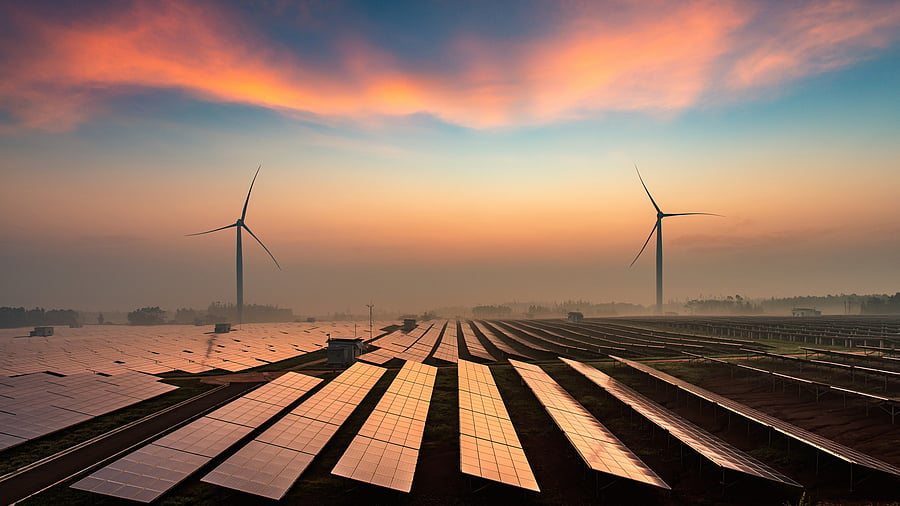
Windmills and solar panels. Image for representation.
Credit: iStock Photo
Mumbai: India’s power sector transition requires a significant increase in financing, with annual investment flows needing to grow to $68 billion (Rs 5.92 lakh crore) by 2032 to meet the National Electricity Plan (NEP-14) targets and achieve India’s 500 GW renewable energy goal by 2030, according to a report by Ember, an independent energy think tank that aims to accelerate the clean energy transition with data and policy.
This means a 20 per cent compounded annual increase from current levels.
The report moves beyond traditional "thumb rules" for calculating risk premiums by adopting a data-and modeling-driven methodology instead.
Project commissioning delays and uncertainties due to specific characteristics of new age Firm and Dispatchable Renewable Energy (FDRE) projects are expected to have the greatest impact on the cost of capital. The analysis suggests that risks due to a combination of both could increase the cost of capital by up to 400 basis points.
Commissioning delays have been caused by land acquisition bottlenecks, grid connectivity delays, and delays in power purchase agreement (PPA) signing. These delays have averaged 17 months, with projects in some cases extending even up to 26 months and beyond.
Additionally, FDRE projects, designed to enhance renewable energy dispatchability, introduce unique financial risks. These risks are mainly attributed to penalties for not meeting the required demand fulfilment ratio (DFR) and exposure to wholesale market fluctuations.
Excess electricity from FDRE projects—ranging from 25 per cent to 45 per cent of the contract requirement—are sold in the wholesale market, thus exposing developers to price volatility and potential price cannibalisation. Uncertainties around future battery replacement costs could also impact the financials of the project.
“The analysis further suggests that a 400 basis points increase in financing costs could result in India falling short of its 500 GW renewable energy target by up to 100 GW. An elevated cost of capital would also increase the cost of electricity for consumers,” the report states.
Neshwin Rodrigues, Senior Energy Analyst for India at Ember, emphasised the need for targeted mitigation measures: "Understanding project-specific financing risks for RE projects is key to designing targeted mitigation measures that keep the cost of capital low. Staying attuned to evolving risk profiles in renewables is essential for sustaining their growth and ensuring India meets its RE targets."